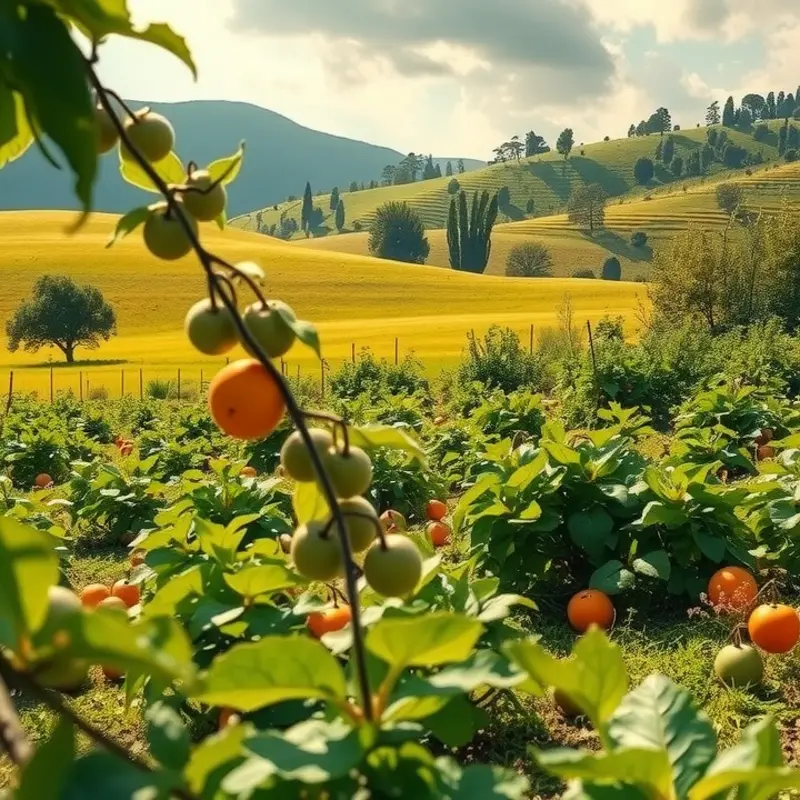Composting food scraps at home is a sustainable practice that not only minimizes waste but also enriches your garden and nourishes plants. By recycling kitchen waste into nutrient-rich compost, you can significantly reduce the amount of garbage sent to landfills while enhancing your gardening efforts. This guide provides straightforward advice on storing food scraps safely, choosing composting methods, and maximizing the benefits of composting at home.
Essential Tips for Storing Food Scraps

Maximizing the freshness and safety of your food scraps is crucial for effective composting. The first step in proper storage involves choosing the right container. For indoor storage, consider using a small, air-tight bin with a charcoal filter. This helps minimize odors and keeps pesky flies at bay. Ensure the container is durable and easy to clean to maintain hygiene.
Metal containers can offer durability, while plastic ones are often lightweight and affordable. Whichever material you choose, ensure it’s well-sealed and fits your available kitchen space. Line your container with newspaper or a paper bag to absorb excess moisture and keep the bin clean.
Understanding the appropriate amount to store is essential. To avoid unpleasant odors, transfer the scraps to your outdoor compost bin regularly. Aim to store only a few days’ worth of scraps in your indoor container. This minimizes the risk of mold and keeps your kitchen smelling fresh. Regular disposal also keeps pests from developing an interest in your compost bin.
Pay attention to where you place your indoor compost bin. A location away from direct sunlight and heat sources is ideal. High temperatures can accelerate decomposition, leading to nasty smells and unwanted pests.
Aside from household bins, another storage option for organic waste is the freezer. Freezing food scraps prevents decomposition until you’re ready to compost. Use freezer-safe bags or containers to store scraps like fruit peels, vegetable ends, and even coffee grounds. This method is particularly useful for managing scraps if you don’t have time to bring them to your outdoor compost pile daily.
Remember to include a diverse range of materials in your stored scraps. A balance of greens (nitrogen-rich materials like vegetable peels) and browns (carbon-rich items like coffee grounds) is necessary for a healthy compost system. By organizing and monitoring what you store, you support efficient compost breakdown.
Selecting an appropriate time to transfer your scraps is another vital step. Transfer them when your container is full, but at least once a week, to maintain freshness and prevent odors. When adding to your outdoor pile, bury the new scraps under a layer of soil or existing compost. This practice helps reduce odors and deters pests like rodents or raccoons from raiding your compost pile.
For those who enjoy culinary experimentation, composting can complement sustainable cooking practices. Consider reading about Mediterranean chickpea salad to find inspiration in using more parts of your produce, thereby reducing your overall waste.
In summary, effective storage of food scraps involves selecting the right containers, monitoring quantities, and handling frequent transfers. By implementing these practices, you ensure a smoother, more efficient transition from kitchen waste to nourishing compost, contributing positively to the environment.
Choosing the Right Composting Method

Selecting an appropriate composting method can significantly impact your waste management success. Different methods offer varying benefits, space requirements, and maintenance demands. Let’s delve into three popular techniques: traditional composting, vermicomposting, and bokashi.
Traditional Composting
Traditional composting is ideal for those with ample outdoor space. This method involves collecting organic waste in a pile or bin, relying on natural decomposition processes. Traditional composting is low-maintenance once set up, requiring turning to aerate the pile. It’s best suited for individuals looking to compost a wide variety of materials, including yard waste and food scraps like vegetable peels and coffee grounds.
The optimal compost pile should balance “greens” (nitrogen-rich materials like fruit scraps and grass clippings) and “browns” (carbon-rich materials like dried leaves and cardboard). This method typically takes a few months to a year to produce usable compost, suitable for those who don’t need quick results.
Vermicomposting
For those with limited space or indoor composting needs, vermicomposting is a practical option. This method uses worms, typically red wigglers, to break down organic waste. Vermicomposting is efficient, as worms can consume their weight in waste daily, producing nutrient-rich castings in the process.
Worm bins are compact, making them suitable for apartments and small homes. They require consistent conditions, such as a stable temperature and moisture level. Feeding is periodic, making it an easy addition to household routines. However, vermicomposting isn’t ideal for all types of food waste. Meat, dairy, and oily foods should be avoided to prevent odors and pest attraction.
Bokashi Composting
Bokashi stands out as an anaerobic method, using bran inoculated with beneficial microbes to ferment organic waste. This technique is perfect for those wanting to compost all types of kitchen waste, including meat and dairy.
Bokashi requires an airtight container, often fitting neatly under a kitchen counter. The fermentation process is fast, typically taking just a few weeks to complete before transferring to traditional compost or burying in soil to finish decomposing. Maintenance is simple, often involving the layering of waste and bokashi bran.
Choosing bokashi is advantageous for homeowners seeking an odorless, fast option that accommodates diverse waste materials without needing outdoor space.
Finding Your Fit
When deciding on a composting method, consider your available space, the types of waste you produce, and how much time you can dedicate to the process. Traditional composting is great if you have a yard and generate lawn clippings. Those in urban settings might prefer vermicomposting for its compact nature and minimal odor. Meanwhile, bokashi is excellent if your goal is to compost all household waste types efficiently.
Exploring various composting methods ensures you choose an approach that seamlessly integrates with your routine, helping you achieve your waste reduction goals. A harmonious fit will not only ensure consistency but also yield rich compost for your home garden. For tips on reducing waste naturally, you might find inspiration in this article, where smart recipes complement sustainable living efforts.
Final words
Composting food scraps at home is not just a trend—it’s a responsible choice for reducing environmental impact and enhancing your garden’s health. By following the tips for storing scraps properly and selecting the right composting method, you create a sustainable cycle that benefits both your household and the earth. With every meal prepared and every scrap saved, you’re contributing to a greener future while enjoying the rewards of rich, fertile soil for your plants. Start composting today, and turn kitchen waste into a valuable resource!







